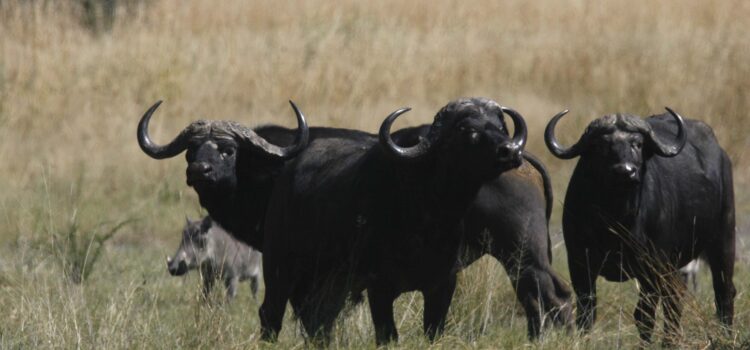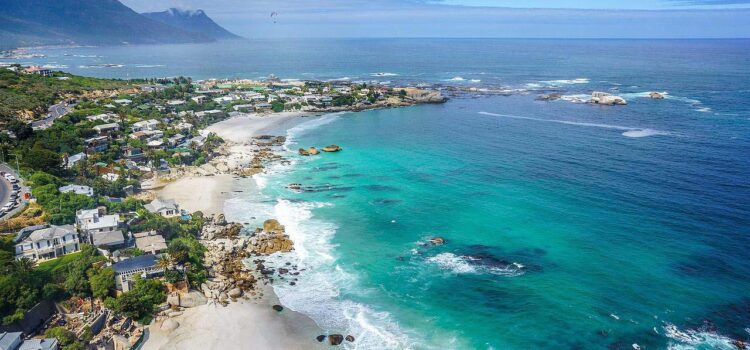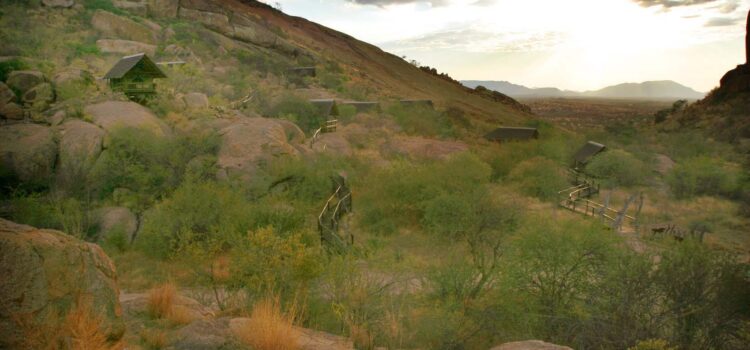Kolmanskop, the deserted town in southern Namibia, where the diamonds once, quite literally, paved the streets, has just announced that visitors no longer require taking a guided tour when they arrive at this famous Namibian tourist destination. Instead they are welcome to pay their entrance fees, and take a self-guided tour through the hamlet.
So what better time to re-look the history of this ghost town;
During its heyday “diamonds were picked up by the handful as they glittered in the light of the moon. – Ron Swilling (Wild Horses of the Namib Desert)” and even today you are not allowed to remove anything from Kolmanskop as the sand used to make the bricks and mortar contain diamonds.
Visiting Kolmanskop today, and knowing its history, is a somewhat sad experience as the Namib Desert is slowly reclaiming the town.
Kolmanskop was named after a German transport driver, Johnny Coleman, who deserted his ox wagon close to the settlement during a sand storm. In 1908, Zacharias Lewala found the first diamond in the area and handed it to his supervisor, August Stauch, leading this area to be declared the Sperrgebiet (restricted area) and exploitation of the diamond fields began.
At the time, the Sperrgebiet accounted for 20% of the global diamond take, with diamond yield tripling in the first five years.
At its peak, Kolmanskop was home to about 700 families and was described as the richest town in Africa!
Kolmanskop boasted a police station, which used camels for their patrols, a post office, general dealer, the largest electrical repair plant in Southern Africa, a hospital, bakery, butchery, lemonade and soda-water factory as well as an ice making facility. (Ice, soda-water, lemonade and milk were delivered, free of charge, to each household daily) yet, less than 50 years after the town was founded, it was abandoned and left to the desert to reclaim.
There was such enormous wealth in this small settlement that the houses were lit by electricity, at a time when Germany was still using gas, and their gardens had plenty of self-storage units. This electricity was not only used to power all the houses, for free, but it also helped operate the first x-ray machine in the Southern hemisphere. The first tram in Africa was all found here, in the middle of this unimaginably hostile terrain! As an aside, the hospital also boasted a rather fine wine cellar, and patients were able to pop down to a fortifying tipple!
In 1927 a casino was built, by experts, in Germany – ensuring perfect acoustics, shipped to Kolmanskop and re-assembled there. It is here where the notorious ‘Champagne Parties’ took place… Legend has it that, on occasion, ladies of easy virtue would bathe in champagne for gentlemen’s entertainment. Champagne was, after all, cheaper than water!
When this ‘recreation hall’ as it was known was built, the mine arranged for operas, theatre groups and orchestras to travel out from Europe for the locals’ entertainment, and were always in aid of charity.
When the South African troops arrived in Kolmanskop, during WW1, Frau Zimmer owned a ‘house of pleasure’ (the green house) – she had been gaoled for smuggling diamonds, which she received in exchange for services rendered. Ironically her house of ill-repute was situated right next to the church!
This church housed a stained glass window and an altar bible which had been gifted to the town by the German Kaiser and his wife.
Even though water was such an expansive commodity, weekly shipments were brought up from Cape Town, so that the ladies of Kolmanskop could have their rose gardens and lawns, potted plants were ordered and shipped in from Europe.
Looking at the deserted town now, with the ever encroaching dunes, it is hard to imagine what it must have looked like at its zenith, with gardens, swimming pools and lawns and the man who started it all, August Stauch, lost his entire fortune during the depression years and died of cancer not far from where he was born in Germany, at the age of 69…
Dave’s Top Tip – if you are going to Kolmanskop, why not get a Sunrise photo pass. This allows you to get in early to photograph the amazing colours that are only found in the Namib, as the sun rises over the dunes!
Courtesy late Franz Schneider and Hennie Kruger.


